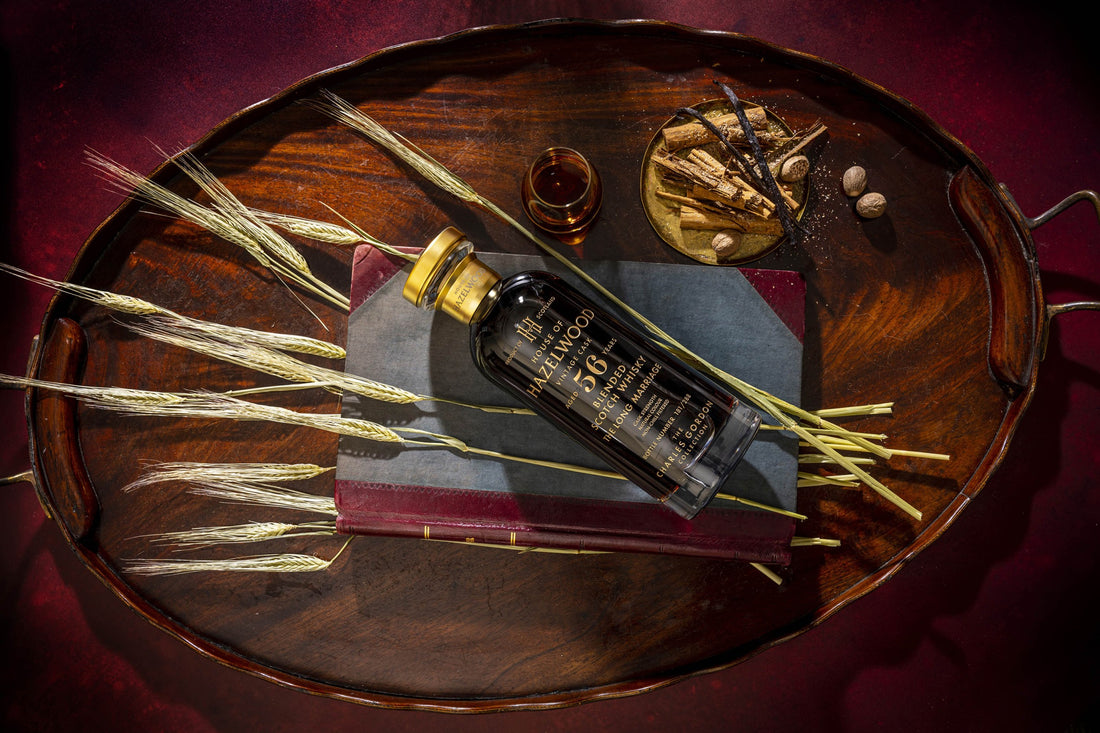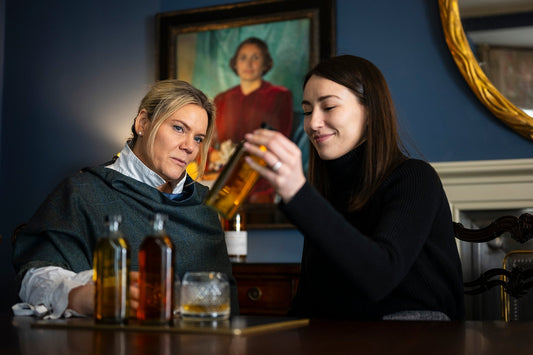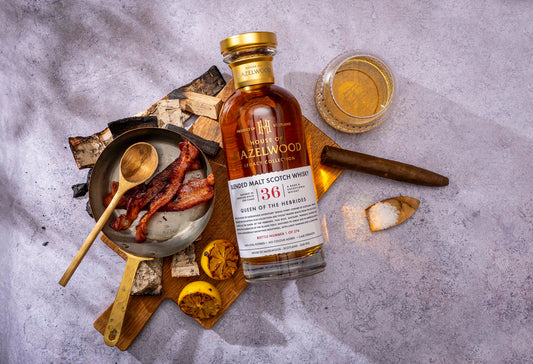When it comes to aged whisky and cask selection, it's a process that has been painstakingly refined for generations.
Cask selection and the wood policy of a whisky producer’s choice is arguably the largest influencing factor on the maturation of Scotch Whisky. The casks destined for a long slumber must be chosen with great care, as it is an investment in decades. Of course, the new make spirit within these casks is monitored across its lifetime in samples, and if a whisky begins to take on undesirable properties, the whisky maker will speedily transfer the spirit to a more suited partner.
In Scotch Whisky law, the wood used in cask maturation must be of oak origin, and the new make within matured for a minimum of three years. On the face of this, it may seem as though a whisky maker’s options could be limited, but there are numerous factors to consider which will inevitably influence the flavour imparted, such as:
- The type of oak and destination of origin (e.g., European Oak)
- Charring and toasting levels of a cask
- The liquid previously held in the cask (e.g., sherry)
- The size of a cask (e.g., a Hogshead)
- The history of a cask (e.g., Refill)
The possibilities that oak presents are seemingly unlimited – and with the options outlined, combined with the creativity of a whisky maker, means that there are next to no bounds in flavour.
So, what is the impact of each of these different aspects, and how does it impact aged whisky? Let’s dive in.
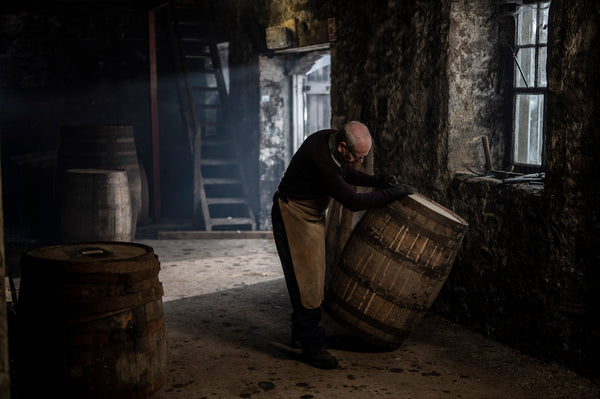
Why Oak?
In Scotch Whisky production, two types of oak tend to dominate the maturation process: American White Oak (Quercus Alba), and European Oak (mainly Quercus Robur).
These types of oak are chosen for their ability to be manipulated by coopers into casks as they are often reliable to work with, not too pourous or knotted in nature, and offer an optimum oxygenation for longer term maturation.
All oak casks are toasted – this triggers the creation of key flavour compounds which pleasantly influences the final flavour, as well as create the conditions needed to impart flavour onto new make spirit. Coopers will use toasting to mould casks into shape. Without the activation created by toasting, the resulting liquid from within an oak cask would otherwise be unpalatable.
The optimum age of these types of oak when harvested tends to be between 70 to several hundred years, making it a long-term investment, with a significant amount of planning required to maintain replenishment of forests.
American Oak
American Oak Casks are typically procured from the Bourbon Industry located in the US state of Kentucky, after being used in their maturation process – these are often described as ex-Bourbon Casks, or American White Oak first fill and refill casks. Unlike Scotch Whisky, the maturation period for Bourbon tends to be shorter – at a minimum of two years (but more commonly stretching to four and beyond in some instances) and as such, casks tend to be more readily available to Scotch Whisky producers.
In addition to toasting, there is a mandatory requirement within the Bourbon industry to “char” casks through a monitored burning of the interior wood. There are multiple levels of charring – ranging from a short burst of 15 seconds, up to almost a minute in length. The act of charring helps to aid the creation of more intense flavours, with the resulting charcoal also acting as a filter for unfavourable new make flavour compounds.
American White Oak casks lend themselves to imparting sweeter notes commonly seen throughout many styles of whisky, with overriding notes of vanilla, coconut, caramel, and light spice – naturally complimentary to new make spirit.
Some whisky producers also opt to use Virgin American Oak Casks, which often are also made by the same cooperages from within in the Bourbon industry, however, unlike the ex-Bourbon Casks, as the name would suggest, these casks are traded without a liquid predecessor. Due to their intense and flavourful profile, Virgin Oak Casks tend to only be used for “finishing” in Scotch Whisky maturation to avoid overpowering any nuanced or subtle flavours.
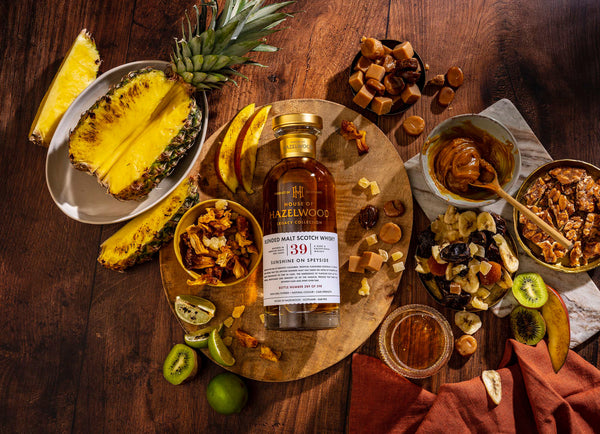
An outstanding example of maturation in American White Oak for an extended period can be found within Sunshine on Speyside, a 39-Year-Old Speyside Blended Malt Scotch Whisky. Unusually, this expression bucks the trend of sherried maturation as is typical with most Speyside whiskies, and instead celebrates the qualities of American White Oak casks, expressing flavours of pineapple, caramelised woodsmoke citrus.
European Oak
The trees used to manufacture European Oak casks typically descend from northern Spain, Portugal, and France – unsurprisingly, located near the production of protected destinations of origin for fortified wines such as Sherry and Port, and wines such as Cognac and Armagnac. European Oak, however, is most strongly associated with Sherry production in Jerez De La Frontera.
In contrast to American Oak, European Oak is bolder in its nature, imparting overt spiciness and wood influence on new make spirit. European Oak is typically more expensive to procure as oak tree cultivation and growth is slower. European Oak casks used in the initial maturation of the likes of Sherry may also be used to mature for a longer period in comparison to Bourbon. This, in combination with a global decline in Sherry consumption means that procurement of Sherry Casks is indeed more expensive, and producers are often relying on decades-old agreements with Sherry bodegas to ensure future supply.

Some bodegas now produce sherry casks with the overt purpose of being used within the Scotch Whisky industry. These casks are typically “seasoned” with sherry for two to three years, before being used for Scotch Whisky maturation. Within the House of Hazelwood, it is highly unlikely you’ll see sherry casks of this provenance, with many of our whiskies having slumbered in casks originally used for true sherry production, such as The Tops or The Long Marriage.
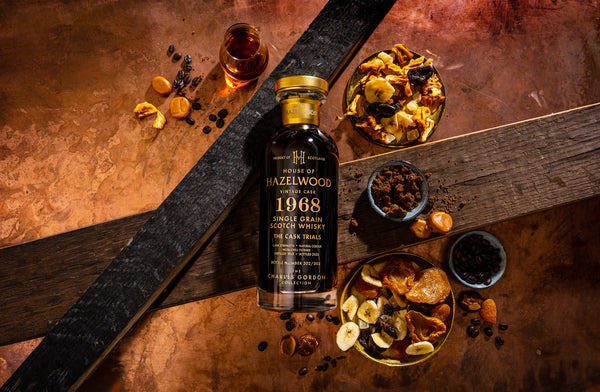
An exceptional example of long-maturation in European Oak can be found within The Cask Trials, a Single Grain Scotch Whisky which has slumbered in a single sherry cask for over half a century. The resulting spirit takes on the qualities of a malt, offering deep, intense notes of dark fruits and nuttiness.
Other Types of Oak Cask and Liquid Predecessors
Of course, we have only outlined two types of common oak cask, and their liquid predecessors. Provided the cask of maturation is of oak origin, then there is no limit to what new make spirit can be matured in. For instance, French Oak, although composed of European Oak, is often associated with a wine finish, and imparts fresh, orchard-fruit centric notes on new make. Similarly, whiskies finished in rum casks made of American Oak may be more likely to impart flavours of molasses, syrup, and heavier spice.
Recent years have seen whisky producers look beyond ex-Bourbon and sherry or port to explore the impact of oak casks holding unconventional spirits such as tequila or even beer on new make flavour.
Some whisky makers are also opting to experiment with relatively untapped types of oak – such as Scottish Oak, however, these types of oak are harder to source in an environmentally friendly way, and often have coopering challenges – e.g., wood is knot-laden, and a tree yields less usable wood, making it more expensive and challenging to produce commercially.
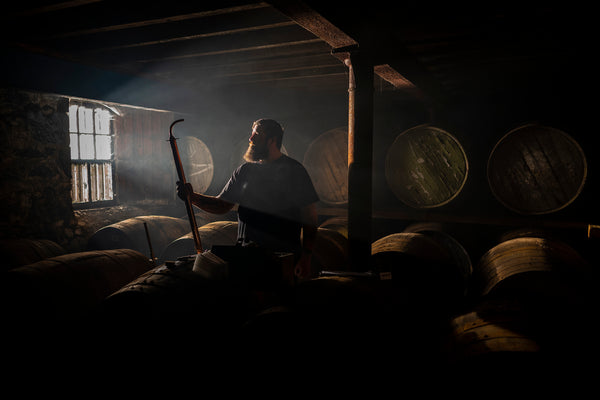
Aged Whisky: Sizing Up the Opportunity
The length of time new make spirit lies within cask is also particularly important to the maturation of an aged whisky. The longer the new make lies in cask, the most time the spirit within has on contact with the wood, aiding oxidisation and introducing new, more developed flavours, including those of “rancio” or meaty notes – such as forest floors, leather, and mushroom.
The location of a cask which slumbers for a long period of time may also play a role – although some whisky producers may take a different school of thought on this when it comes to physical location – such as by the sea, or within central Scotland. The airflow within the warehouse where it lies will play a role in the oxidisation and evaporation of a cask – for instance, dunnage warehouses will have less of a controlled environment versus a modern purpose-built warehouse.
The Next Chapter, a 50-Year-Old Blended Scotch Whisky from the Charles Gordon Collection is the epitome of extended maturation. This particular expression, distilled in 1972, was matured to near perfection until around 2007, where instead of being bottled, it was controversially placed into a secondary finishing period for 15 years in ex-Bourbon barrels. This risky decision, however, paid in dividends, with the final liquid elevating to another plane of flavour, with layers of toffee, Seville orange and marmalade demonstrating complexity and richness.

Liquid predecessors, length of maturation and type of oak are just three parts of influencing the flavour of new make spirit. In the world of whisky maturation, the size of a cask does indeed matter – and can drastically influence the end result.
The most common size of cask used for maturation is that of a Hogshead – the typical barrel used for the majority of whisky maturation due to its optimum capacity of up to 250 litres. This is the most common size you’ll come across; particularly where significantly aged whisky is concerned as the Angel’s Share is likely to be more favourable at the end of an extended period of maturation. The larger size also makes this size of cask the ideal contender for aged whisky as the increased area of the cask will reduce intense, overpowering flavours imparted through wood contact and oxidisation over a longer period.
The second most common size of cask unsurprisingly hails from the world of Sherry, a 500-litre cask known as a Butt. Again, a popular selection for whisky producers of aged whisky, the increased size of cask enables long maturation periods, protected from evaporation oversaturation in flavour.
Smaller sizes of cask are rarely seen in the production of aged whisky – such as a Port Pipe or Quarter Cask. On the rare occasions these smaller casks stay the length of a longer maturation, the resulting liquid will likely be significantly more concentrated in nature because of the increased contact on wood.
Aged Whisky: First Fill Versus Refill
For some whiskies, there may be a declaration of the number of times a whisky has been matured in any particular cask. As the name would suggest, first fill is the first time a cask has played host to whisky new make spirit, whereas a refill cask may have been filled once or twice before.
For some whisky enthusiasts, there is a belief that first-fill casks should be regarded as superior – but in the production of aged whisky, this often is not the case.
First-fill casks are likely to impart more flavour from the wood, however, in doing so, the new make spirit and its signature distillery character, created during the fermentation and distillation process, will be diminished in the face of such a powerful influence.
Refill casks are often favoured in the use of aged whisky as their flavour is imparted slower, and with constant monitoring, the whisky producer can adjust the maturation over years. Both types of cask have their place – and just like the debate between Grain Versus Malt, one is never better than the other – and both are needed to maximise flavour diversity in the world of Scotch Whisky.
Aged Whisky and Cask Selection: A World of Possibilities
Our foray into the world of aged whisky and cask selection only scratches the surface – with the chemistry of tannins and forests of origin promising a flavour discovery of its own. The possibilities, as you can see, are simply endless.

